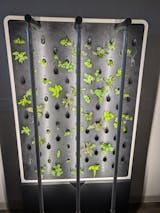Author: Sukhmani Singh
Canada - we have a garbage problem. And the numbers are pretty staggering.
According to the National Zero Waste Council, we generate approximately 26 million tonnes of waste each year. Our country produces more garbage than we can handle, be it in terms of cost, or a place to dump our waste. Residential waste accounts for a whopping 45% of this figure - the equivalent of two full plastic bags of waste every single time you shop. More than $1,000,000 is spent each day to keep this trash moving.
But the waste doesn’t stop there.
Residents produce 14 kilograms of household garbage each week. About one-third of household garbage is food packaging and plastic bags, with only 18-20% recycled at the point of disposal. Most of this plastic waste ends up in landfills, and eventually in the ocean.
Concerning food alone, residents throw out an estimated 170 kilograms of food each year, two-thirds of which can be avoided. Most food waste comes from the over-purchasing of groceries, overcooking quantities, and spoiled leftovers. Disposed food eventually ends up in the landfill, producing 10 million tonnes of CO2 (the same as roughly 2 million cars on the road).

Thankfully, we have both indoor and outdoor home growing as a solution to the household waste problem persistent in our community.
By choosing to grow vegetables and fruits, you are actively reducing the amount of single-use plastic food packages and avoiding excessive food wastage at the household level. You’re also contributing sustainably by reducing the environmental impact of transport moving produce from the field to the supermarket.
Further, as home-growers, we exercise greater control over the amount of food we consume.
We can ensure we use every part of home-grown produce, even if it fails to meet strict aesthetic criteria that is generally required at supermarkets. Growing your own produce provides the opportunity to continually re-harvest, re-plant, and re-grow the same crop. This not only saves our environment, but also hundreds of dollars each year in saved produce expenses.
Due to modern technology, whether you’re on the 40th floor of a skyscraper with little or no light, or the first floor with a full backyard, you can grow anything, anywhere, anytime. Our AEVA and EVE products are a perfect example of that. They allow you to grow local, fresh food 365 days a year indoors (even in the middle of winter), giving you a year-round solution to the waste problem we’re faced with daily.
If you’d like to learn more about food waste in Canada, here are some great resources to start:
- Less Food Loss and Waste, Less Packaging Waste (2020) http://www.nzwc.ca/Documents/FLWpackagingReport.PDF
- The Avoidable Crisis of Food Waste (2019) https://secondharvest.ca/wp-content/uploads/2019/01/Avoidable-Crisis-of-Food-Waste-The-Roadmap-by-Second-Harvest-and-VCMI.pdf
- Food Waste in the Home (2017) https://lovefoodhatewaste.ca/about/food-waste/
- Canada's dirty secret (2017)https://www.canadiangeographic.ca/article/canadas-dirty-secret
- Statistics Canada (Disposal of Waste) https://www150.statcan.gc.ca/t1/tbl1/en/tv.action?pid=3810003201

